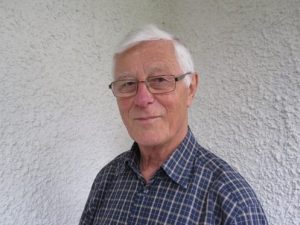
Call for Papers
The ECS Journal of Solid State Science and Technology is publishing a focus issue dedicated to the memory of Professor George Blasse: Recent Developments in Theory, Materials, and Applications of Luminescence. On December 30, 2020, Prof. Blasse passed away unexpectedly at the age of 86, in Munich, Germany, where he lived since his retirement in 1996. Prof. Blasse was highly recognized internationally and shaped the field of luminescent materials research. He combined groundbreaking fundamental discoveries with societal relevance including the discovery of the phosphor that enabled white light LEDs. He had a deep and also intuitive understanding of luminescence phenomena, and often relied on clever chemical variations in host composition and structure to obtain insight into the underlying physics of luminescence and energy transfer phenomena of ions in solids.
The landscape of research and application of luminescent materials is changing rapidly, demanding novel functionalities and applications. These applications include bioimaging, solar cells, thermometry, sensors, plant biology, human-centric luminaires, and more. They need new materials with suitable physicochemical characteristics, including the appropriate and optimal luminescence properties required for such applications. Novel theoretical methods based on first principles methods, artificial intelligence, and machine learning are being used increasingly in search of such materials. New processes to synthesize these materials and to integrate them in devices are being studied. Research also continues to identify new luminescent materials with improved performance for traditional lighting and display applications. The well-known yellow phosphor Y3Al5O12:Ce3+ (YAG:Ce3+) continues to be the dominant phosphor for lighting LEDs due to its high efficiency and stability under a variety of harsh conditions (temperature, flux, etc.). Phosphor research for blue-light-emitting diodes is currently focused on developing new narrow-band phosphors, especially for red emission. Such activities have led to a new class of (oxy-)nitride phosphors, and oxyhalide phosphors activated by tetravalent Mn. Perovskites are rapidly emerging as a new class of materials for lighting and solar cell applications.
This virtual issue focuses on papers covering the following topics:
- Theory, simulation, and machine learning
- Applied first principles calculations
- Data-driven development of luminescent materials
- Fundamental theory development
- Novel materials
- Oxynitrides
- Perovskites
- Up-conversion materials
- Chemiluminescence
- Glass and ceramics
- OLED materials
- Applications
- Bio-imaging
- Solar cells
- Thermometry
- Sensors
- Humancentric luminaires
- Plant biology
- LED (blue +nUV)
Reviews, critical reviews, and perspective papers are welcomed.
Accepting Submissions: April 29, 2021 | Submission Deadline: July 28, 2021
(At the time of submission, indicate that the paper is intended for the focus issue Dedicated to the Memory of George Blasse: Recent Developments in Theory, Materials, and Applications of Luminescence.)
Visit the ECS website for author submission instructions and requirements of each article type.
Guest Editors
John Collins, Wheaton College, U.S. | jcollins@wheatonma.edu
Jakoah Brgoch, University of Houston, U.S. | jbrgoch@uh.edu
Eugeniusz Zych, University of Wroclaw, Poland | eugeniusz.zych@chem.uni.wroc.pl
Tetsuhiko Isobe, Keio University, Japan | isobe@applc.keio.ac.jp
Rong-Jun Xie, Xiamen University, China | rjxie@xmu.edu.cn
Ramchandra Pode, Kyung Hee University, Korea | rbpode@khu.ac.kr
Andries Meijerink, Utrecht University, The Netherlands | A.Meijerink@uu.nl
Technical Editor
Kailash C. Mishra, Osram Sylvania (retired), U.S. | Kailash.Mishra@electrochem.org
Editor-in-Chief
Krishnan Rajeshwar, The University of Texas at Arlington, U.S. | rajeshwar@uta.edu
Articles are published in a standard issue of the journal as they are accepted. If selected at submission, accepted papers are published online in the ECS Digital Library within 24 hours of scheduling for publication. The version of record is published online within approximately 10 days of final acceptance.
OPEN ACCESS: As part of the Author Choice Open Access program, authors can select to have their papers published as open access. If open access is selected at the time of submission, authors must agree to pay an article processing charge (APC) if the paper is accepted. ECS members receive a 75 percent discount on all APCs. All discounts are applied at the time of payment. Authors from ECS Plus subscribing institutions are eligible to have APCs waived. Check if your institution subscribes to ECS Plus.

